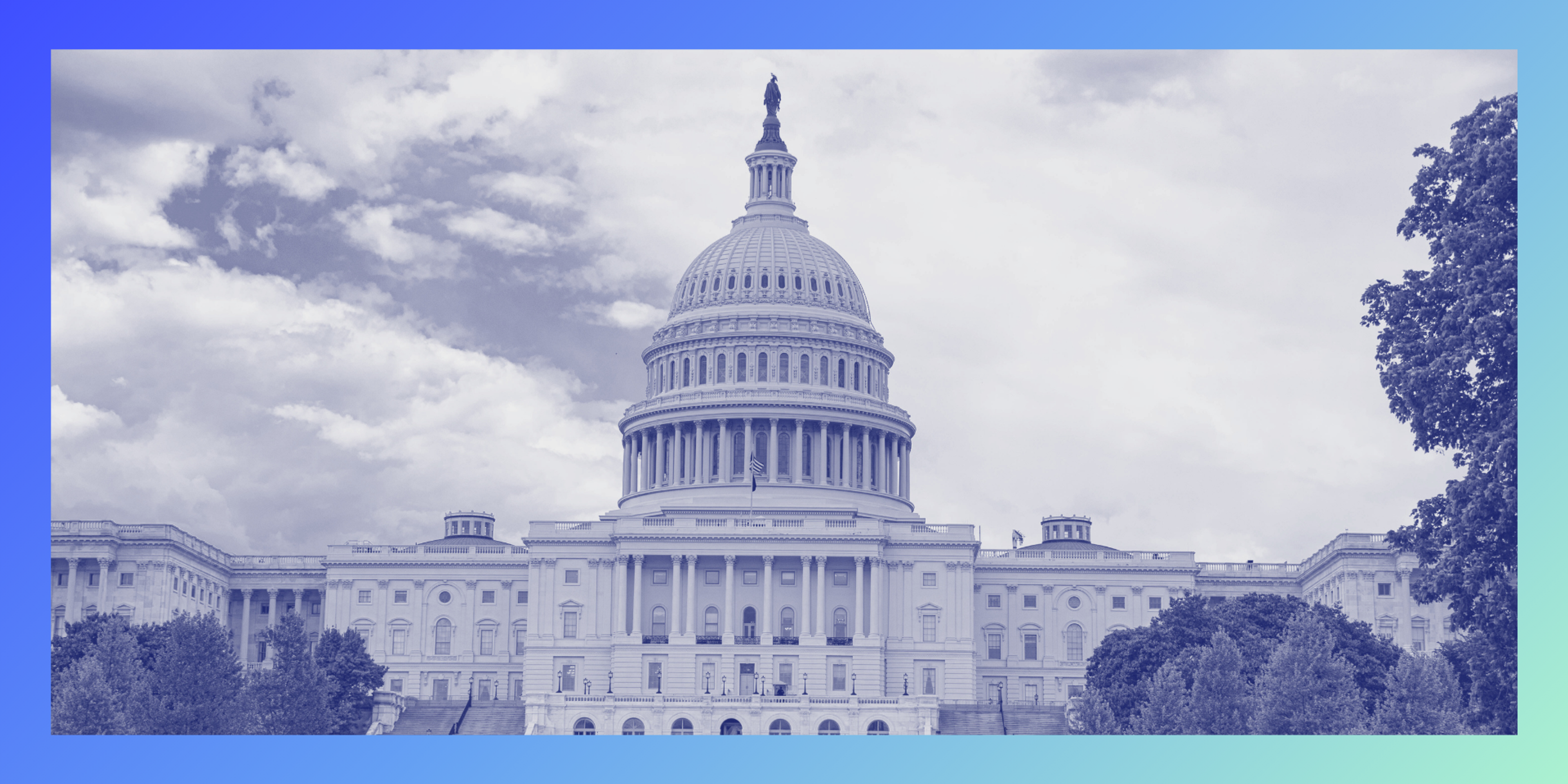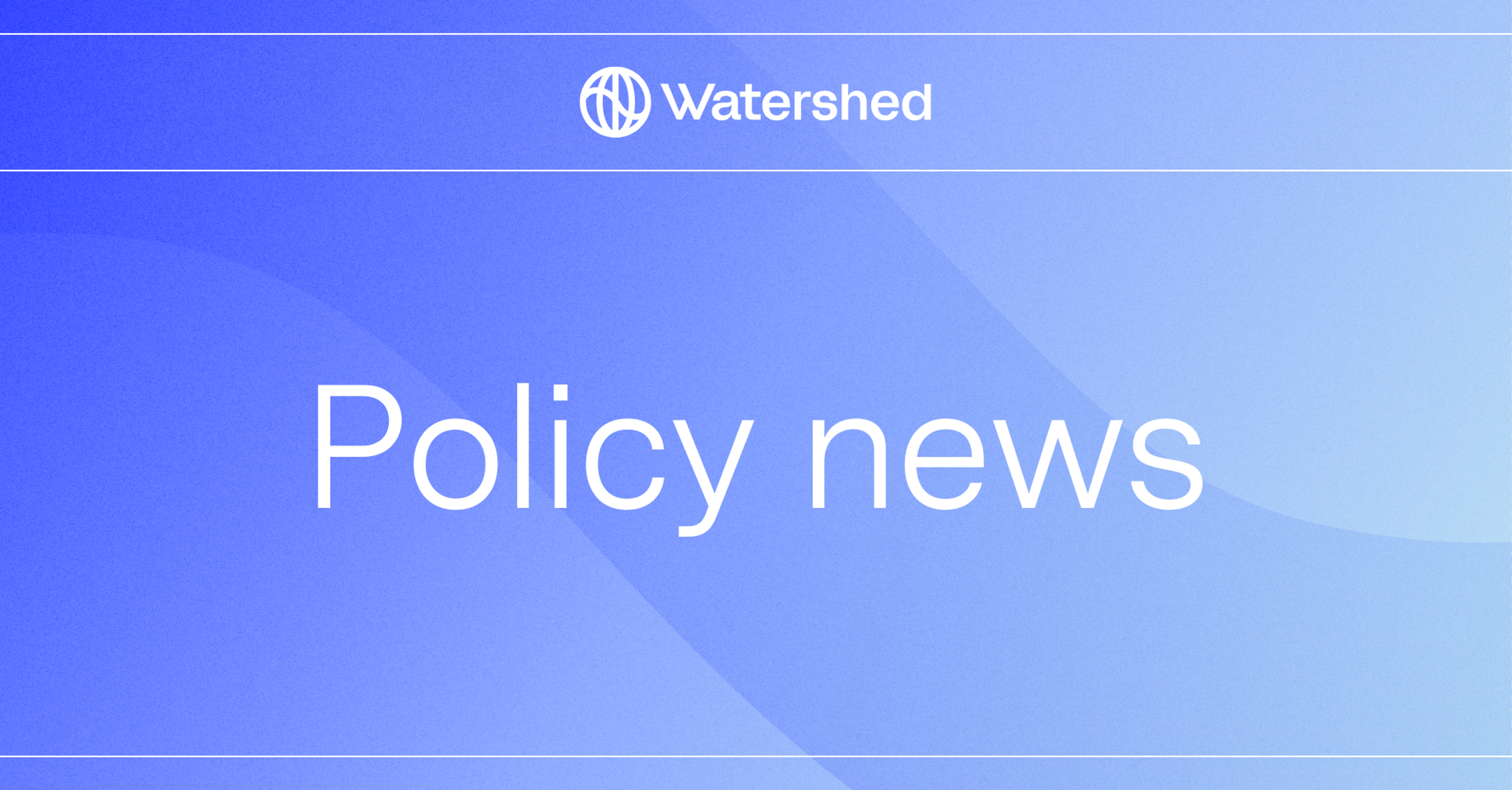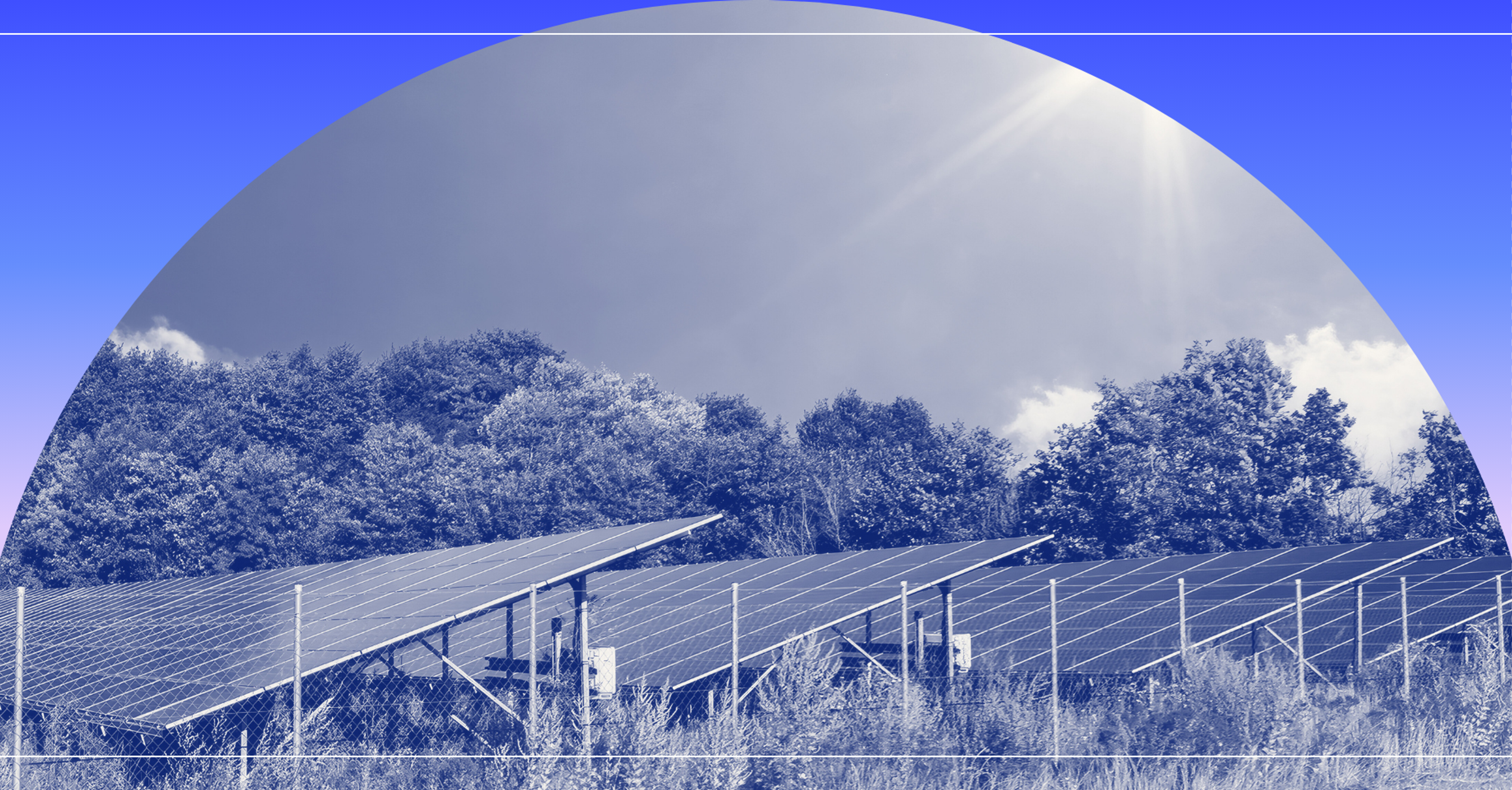On July 23, 2025, Canary Media's Jeff St. John and Watershed's head of decarbonization products came together to analyze and discuss the Trump administration's domestic policy act referred to as "One Big Beautiful Bill" and its implications on the business decisions corporate sustainability programs should make on clean energy investments. The following is a summary of some of the takeaways from that talk. You can watch the full discussion on-demand here.
What is the "One Big Beautiful Bill" (OBBB) act and how does it impact clean energy?
The OBBB Act significantly alters the clean energy landscape established by the Inflation Reduction Act. While the legislation creates substantial challenges for the sector, key provisions prevent more severe disruptions that earlier versions would have caused. The primary impact is accelerated project timelines.
The IRA provided a clear development pathway for clean energy through 2033 and beyond via tax credits. The OBBB has compressed this timeline, with projects needing to commence construction by July 4, 2026, to retain tax credit eligibility.
Critical provision: Republican Senators secured important amendments that preserved tax credits for solar and wind projects starting construction within the next year, rather than eliminating them almost immediately as earlier versions proposed.
How does this affect different clean energy technologies?
Understanding these timeline changes is crucial, but the bill's impact varies significantly depending on the specific clean energy technology in question.
Technologies facing significant impacts:
- Wind and solar projects are likely to experience the steepest reductions in federal support.
- Smaller developers may face challenges due to increased financial commitments required upfront.
Technologies with continued support:
- Nuclear power maintains strong federal backing.
- Battery storage systems retain more favorable treatment.
- Geothermal energy projects see less disruption.
- Carbon capture technologies preserve existing incentives.
What states will be most impacted by the bill?
States with supportive clean energy policies—California, Illinois, and New York—are positioned to attract increased investment in the short term as federal support shifts.
What does OBBB mean for corporate sustainability and clean energy investment strategies?
Corporate responses center on three strategic adjustments:
- Enhanced due diligence requirements - Project evaluation has become more complex, requiring detailed legal review of agreements to determine tax credit eligibility.
- Risk management through diversification - Companies are shifting from single large project sourcing to distributed procurement strategies with multiple smaller projects.
- Accelerated decision-making timelines - The compressed timeline creates urgency for sustainability initiatives that previously operated on longer horizons.
Strategic opportunity for sustainability teams: The July 2026 deadline provides a compelling business case to engage finance leadership. This timeline urgency, combined with renewable energy's favorable economics, creates clear profitability arguments for accelerated clean energy procurement.
How do the Foreign Entity of Concern (FEOC) rules affect projects?
FEOC rules establish restrictions on Chinese government entity involvement in renewable energy projects receiving federal tax credits. These regulations create operational complexity:
- Projects must demonstrate independence from specified foreign government entities.
- Requirements extend beyond previous restrictions to cover broader supply chain relationships.
- Developers must conduct comprehensive supply chain reviews while managing accelerated project timelines.
- Some projects may begin development without certainty regarding final tax credit eligibility.
Supply chain implications: While these rules create near-term challenges, the IRA's success in accelerating domestic manufacturing provides alternative sourcing options, including major facilities now producing panels domestically.
Will reduced subsidies drive industry efficiency improvements?
Current market dynamics indicate that efficiency gains are both achievable and necessary. Current U.S. renewable energy development faces significant cost premiums compared to international markets. For example, rooftop solar costs approximately three times more domestically than in comparable markets like Australia, primarily due to regulatory complexity.
Efficiency opportunities include:
- Streamlined permitting processes across multiple jurisdictions
- Adoption of instant permitting platforms
- Improved utility interconnection procedures
Success in these areas could help offset some federal support reductions while maintaining project economics.
How should companies navigate pricing and market changes to clean energy as a result of OBBB?
Expect price adjustments while maintaining cost competitiveness. Power purchase agreement (PPA) prices are projected to increase following tax credit changes, yet remain competitive with new natural gas generation.
Renewable Energy Credit (REC) markets face increased volatility from:
- Reduced supply from slower new project development.
- Upcoming Greenhouse Gas Protocol revisions.
- Large corporate procurement strategies affecting market dynamics.
Recommended approach: Transition from point-in-time REC purchases to structured annual buying programs with market intelligence to optimize transaction timing.
Outside of the United States, how is clean energy development going?
Global clean energy development continues robust growth outside the U.S. While domestic capacity additions may decrease significantly through 2035, international markets maintain expansion:
- China continues installing 500+ gigawatts of renewables annually.
- Europe maintains 100+ gigawatt annual installation rates.
- Both regions offer more predictable policy environments.
Historical perspective provides pragmatic optimism: Other markets have successfully navigated similar policy transitions. Spain experienced comparable challenges over a decade ago but has since achieved 30% annual renewable capacity growth as technology costs declined.
Corporate adaptation: Companies are diversifying clean energy investments across multiple jurisdictions, emphasizing regions with stable, supportive policy frameworks.
How can companies prepare for price increases in clean power?
Find leverage and negotiation options in aggregative procurement strategies. As large technology companies consume available clean energy capacity. Individual companies benefit from pooled approaches through:
- Enhanced negotiating position: Combined demand enables better pricing and terms.
- Risk distribution: Multiple smaller projects reduce portfolio vulnerability.
- Shared expertise: Complex regulatory compliance becomes manageable through specialized partners.
- Improved access: Developers prioritize aggregated demand, enhancing project pipeline access.
Cross-technology applications: These benefits extend from utility-scale projects to distributed solutions like onsite solar, where grouped buyers receive priority consideration from developers managing compressed development timelines.
What should corporate sustainability leaders do now?
For corporate sustainability teams operating across these varied state landscapes, the OBBB creates both challenges and opportunities that require immediate strategic adjustments.
Three strategic priorities for immediate implementation:
- Engage organizational leadership proactively: Leverage current policy attention to secure executive support for accelerated clean energy initiatives. The July 2026 deadline provides the compelling timeline that sustainability programs often require for resource allocation.
- Develop comprehensive scenario planning: Create multiple procurement pathways accounting for various regulatory outcomes, including both current tax credit scenarios and post-incentive market conditions.
- Balance urgency with strategic risk management: Pursue accelerated timelines while maintaining prudent diversification through aggregated, distributed approaches rather than concentrated project exposure.
The strategic opportunity: Organizations that navigate this transition period effectively can secure advantageous clean energy investments while competitors delay decisions. Uncertainty creates competitive differentiation opportunities for sustainability leaders who respond strategically and decisively.
Long-term perspective: Renewable energy remains the lowest-cost electricity generation globally. Current policy changes create near-term complexity but don't fundamentally alter the economic advantages of clean energy technologies. Companies positioning themselves strategically during this transition will benefit from both immediate cost savings and long-term competitive advantages.
This analysis is based on a webinar hosted by Watershed featuring Jeff St. John, Chief Reporter and Policy Specialist at Canary Media, and Matt Konieczny, Head of Decarbonization and Clean Power at Watershed. The discussion provides expert guidance for navigating the evolving clean energy policy landscape. It is not intended to be legal or investment advice.






